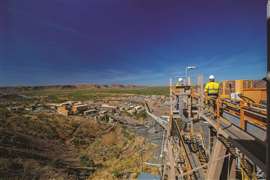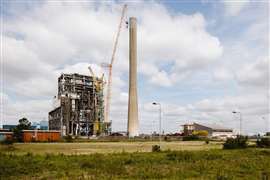Opinion: The outlook for European construction is bright
05 July 2021
John Stephan of international business advisory firm BDO looks at what 2020 has taught us and what lies ahead for the construction industry in 2021
 John Stephan, global head of mergers & acquisitions at BDO
John Stephan, global head of mergers & acquisitions at BDO
It’s fair to say that, as a whole, the construction industry has weathered the storm remarkably well. The last 12 months have placed considerable pressure on the European and global markets. However, in its spring 2021 Construction Industry Scenarios, the Construction Products Association (CPA) predicted the UK in particular would make up practically all the output lost in 2020.
Despite it falling by 12.5% last year, forecasts predict a 12.9% increase in 2021 and a 5.2% rise in 2022. This is coupled with infrastructure output which is expected to increase by 23.9% this year, rising further by 5.9% in 2022.
Across Europe, the outlook is slightly more tempered, with European M&A transaction volumes down by 29.8% in 2020. According to Euroconstruct, construction activity is expected to fall by 7.8% before rising by 4.9% in 2021. However, a complete recovery is not anticipated before 2023. Much will depend on how well government relief/stimulus programmes work, but mid-term positive factors, such as the need for housing in urban regions, energetic renovation and modernising infrastructure, will set the tone for growth again.
There’s little doubt that the global pandemic has significantly impacted businesses within the construction and building products & services sectors. Core functions, such as people, processes, performance, productivity and profit, have all suffered. But the latest mergers and acquisition figures, as part of BDO’s annual sector insight, suggest that it’s a resilient market that is well positioned to withstand the challenges of Covid-19. Unlike previous recessions, there was no sharp fall in client demand, or lack of finance. The world faced a healthcare crisis like no other, but the construction industry soon readjusted following the initial shutdown of large parts of the economy.
Mergers and acquisitions – what do the figures tell us?
In the last eight years, there have been 5,000 transactions across the globe.
While UK deal volumes declined by 6% in 2020, with 249 transactions completing last year, activity levels were better than expected and sat just above 2017 levels. Overall, there were 785 transactions worldwide (a fall of 15.4%), with the Nordics becoming Europe’s second most important market for deals behind the UK (43 deals in 2020), taking an 18% share. Interestingly, the Swedish building products & services sector is characterised by low private equity activity, due to the larger presence of serial acquirers, such as Instalco, Bravida and Indutrade, which together participated in 51% of the sector’s deals in 2020. Germany and France also showed strong resilience in the buyer and seller market over the last 12 months.
The proportion of transactions involving private equity in the UK also jumped from 22% in 2019 to 32% in 2020, the highest level in a decade. The market saw an increase in specialist funds, investors driving value from carve-outs and taking advantage of rapidly changing dynamics in the industry. Globally, the number of buyouts increased to 17.1% - up from 16.1% in 2019.
Last year’s influx of private equity cash was likely triggered by a growing awareness of the sector’s growth potential as the UK government doubled down on its infrastructure build-out commitments to bring back the economy after Covid-19.
If you combine the limited impact of the global pandemic, coupled with a strong growth in transactions that the sector has been seeing for more than a decade, it all bodes well for the immediate future of M&A activity in the sector.
Deal outlook in 2021
Besides foreign buyers entering the UK, there is a good chance that British companies will look to make acquisitions abroad as a result of Brexit. For companies that trade with Europe or have European supply chains, owning subsidiaries on the continent became a more attractive proposition on 1 January.
As a result, a rise in cross-border deals to shore up supply chains, after a fall in activity between 2019 and 2020, is expected. However, cross-border activity might take a while to pick up as countries worldwide, and particularly in Europe and North America, maintain lockdowns pending vaccine rollouts.
The question is what kind of targets will be attracting attention in 2021? Naturally, any business with high growth potential will find plenty of suitors. But with a rising focus on environmental, social, and corporate governance issues, companies that score highly on sustainability could be particularly sought after.
Similarly, there is likely to be a growing premium on businesses that are adopting technology, either to deliver innovation through business processes or to create products appropriate to society’s increasing need for smart infrastructure.
It’s definitely a time to buy and sell with many opportunities arising from portfolio reviews, corporates streamlining operations through carve-outs, and significant cash available in the private equity market to invest in attractive businesses.
But corporate transactions remain as complex as ever, and there are additional challenges to be considered as businesses navigate through this period of upheaval and complexity.
Across Europe, there is a mixed picture. Building activity in the Netherlands has come under pressure in the last year, fuelled by a national nitrogen debate, which is pressuring businesses to play their part in decreasing nitrogen levels in the atmosphere. The construction sector in general is a key contributor to nitrogen levels and, therefore, interest in the take-over of more general construction companies has been much lower than before.
The overall construction market in Germany proved very resilient during 2020, notwithstanding the Covid-19 pandemic. It was underpinned by strong order books, up by 2.2%, with absolute volumes at a 19-year high and held up strongly compared to other European markets, including France.
Thanks to good gross domestic product growth in the next few years, growth should resume in 2021, but 2019 levels will not be reached before 2024.
What does the future hold?
Just as construction demand has recovered sharply in the UK, it has also recovered in key markets such as China and the US, increasing pressure on supply chains and leading to some product shortages.
In addition, shipping costs from China have risen from around $2,000 for a 40-foot container in Autumn 2020, to over $8,000 in January 2021 due to increased demand and Covid-19 disruption. This has led to a reduction in shipping capacity and a lack of supply of empty containers in China. The shipping costs issue in particular has exacerbated already rising imported product costs challenges.
It’s also worth noting that Brexit and Covid-19 have meant that there has been
a 42% fall in the number of European Union (EU) workers in UK construction over the last three years. London is particularly reliant on EU construction workers. This means that as construction activity continues to pick up in the capital, it may face skills shortages.
This plays out in a recent BDO survey of businesses across the construction and building products & services sectors, which showed lingering concerns related not just to Covid-19 but also Brexit. While 48% of respondents felt the biggest challenge facing the UK construction industry would be further Covid-19-related restrictions, 45% cited labour shortages. Similarly, 91% of respondents were concerned about the risk of supply chain failure.
However, despite this, there remains a high level of optimism in the sector, based on strong order books. The promise of economy-rescuing infrastructure investments through initiatives, such as the UK’s Build Back Better plan, leaves many building products & services companies poised for a boost in the coming months and years. Furthermore, Covid-19 has also accelerated the trends towards digitalisation and sustainability that were already evident in the market in 2019.
For the building products & services sector, this increased focus on sustainability may pose some challenges. For instance, materials companies in industries such as cement and steel-making will need to consider how to decarbonise their operations. And even relatively non-polluting companies may need to examine their supply chains for sustainability-related risks. Generally, across the industry, there is a growing awareness that gleaming ESG credentials are not just a desirable brand attribute, but also increasingly a prerequisite for market entry. Overall, the push for greater sustainability is a massive opportunity.
Interestingly, as businesses have been forced to shift towards new technologies and digital channels, the adoption and use of building information modelling (BIM) could begin to increase.
This data-based framework for the design, construction, operation and maintenance of buildings has been in development since the 1970s, but has yet to fully take off. There are several possible reasons for this. The main one is simply that, until now, companies have not had an overriding need to work with BIM.
Companies competing in the post-Covid-19 economy will need to be highly efficient, reducing labour and materials costs, without compromising on quality.
Those that are using BIM systems are already achieving levels of operational efficiency above those of their peers.
Investment in infrastructure
Global infrastructure investments were anything from 19% to 23% below where they should have been before Covid-19, according to various estimates. But a desire to stimulate jobs and wealth creation in the wake of the pandemic looks likely to shake off a lack of confidence in embarking on major projects, and the concern now is more around access to materials and skilled professionals.
There’s little doubt that the construction and building products & services sectors have faced the most unusual of times. While there are still issues to be resolved on many fronts, the outlook for the sector is arguably brighter than it is for many others.
STAY CONNECTED


Receive the information you need when you need it through our world-leading magazines, newsletters and daily briefings.
CONNECT WITH THE TEAM











